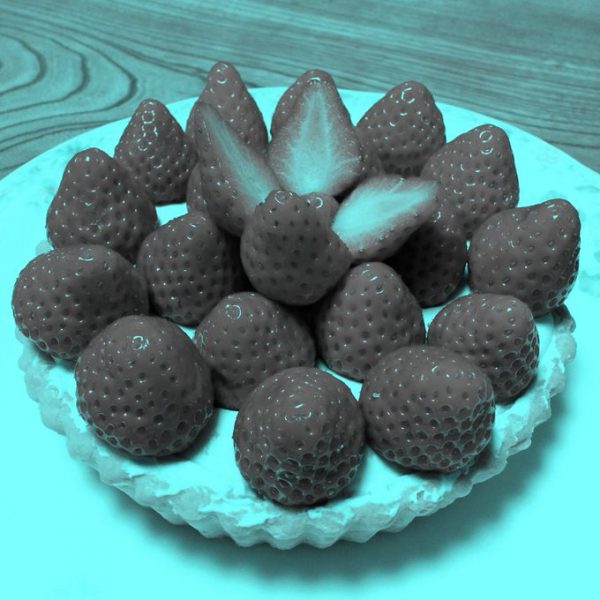Source/credit Dress picture: Cecilia Bleasdale
It’s not what you look at that matters, it’s what you see.
~ Henry David Thoreau
The term color constancy refers to our ability to perceive stable surface colors despite changes in illumination. A good example is this image of a blue mug. Our brains clearly perceives the mug to be completely blue. By using the information in the image surrounding the subject, we can conclude that the mug is blue. But if we would open this image in a photo editing image and use a color picker, we will see that this is not true. If you know how to draw or to paint, you will know that an image of a three-dimensional object is made of multiple colors and hues to give it a shape.

While we translate the information we see subconsciously into an image, it is much harder to do this the other way around and create images with the right illumination, reflection, hues, colors and more. It can take years of practice for an artist to learn to create realistic images. Simply tracing the shape of this mug and coloring it an even blue is not going to be realistic.
Color Constancy Examples
Our brains interpret colors, rather see the actual colors in an image. If you would have to tell the actual color that you would need to replicate the image, it becomes really hard when surrounding colors influence your interpretation.

Source/credit: Barton L. Anderson & Jonathan Winawer
For example this image of black and white chess pieces. All the pieces actually are the same color. However, we will immediately interpret them as black and white pieces. Our brains know that if the black pieces would be in a dark and cloudy environment we cannot see them well. Just so with the white pieces, if they would be in a white and foggy environment.

Source/credit: Akiyoshi Kitaoka
Color constancy helps us to find and understand objects, even if they are placed in different lighting. For example, our brains understand that the strawberries in this image are red. It takes into account the blue lighting in the scene. However, if you would examine this image with a color picker or as an artist, you will not find a single red pixel in this image.
Optical Illusions
When an image is missing surrounding details that would normally give us clues on how to perceive it, we get confused. A prime example is the infamous picture of The Dress (pictured at the top of the page). The extreme close-up deprives us from information about lighting. Many of us will then proceed to take the image at face value and see the white and gold pixels. A few of us, however, see enough clues to have their brains decide that the dress’ actual color is blue and black.

Source/credit: Lacie Marie
These flipflops are an identical illusion to the one of The Dress. The bad lighting and lack of surroundings make them seem white and gold. The phenomenon is now well discussed on the news and online and explained by scientists. However, it is still not clear why some people see the image one way and others not, and why it is impossible to change your perception. (You can try to look at the screen from an angle)
We have a collection of optical illusions with all kinds of objects, from buildings to chairs and cars. Check them out and see if you can find some illusions that are caused by a lack of color constancy.
